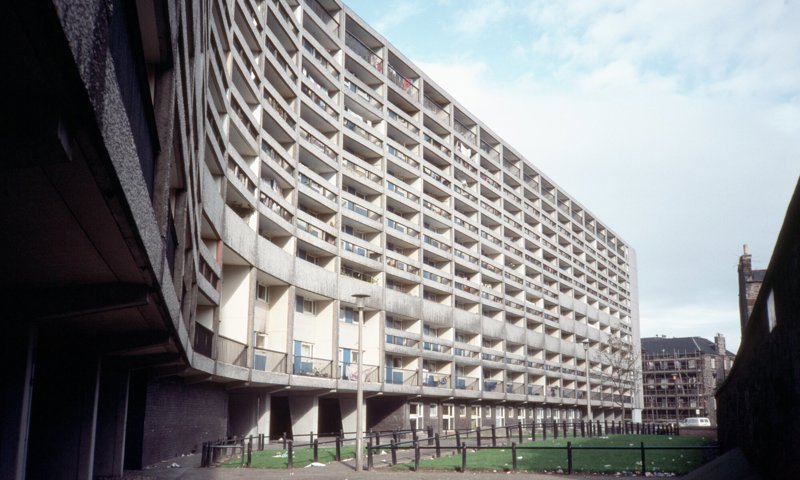1 Wellbeing and the Historic Environment
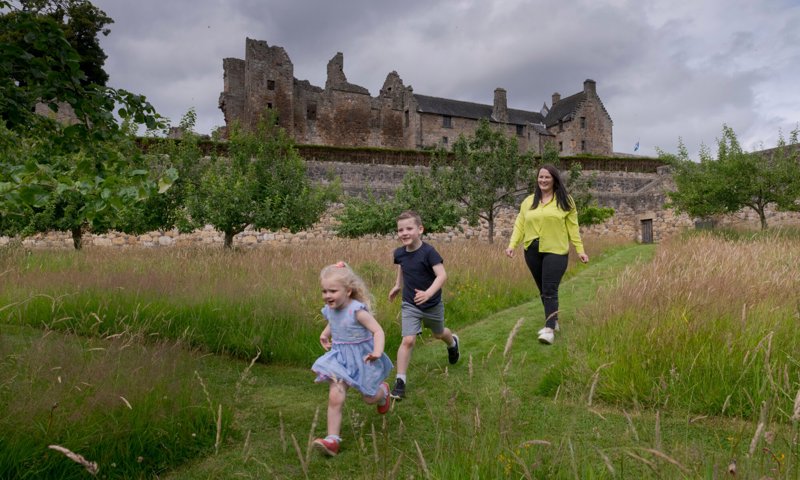
A family explores the walled and terraced gardens of Aberdour Castle, Fife.
We want heritage to make a real difference to people’s lives. To help us understand how heritage improves wellbeing at community and society levels, we undertook research to understand how individuals benefit from Scotland’s historic environment.
There is not a single, comprehensive source for defining and capturing wellbeing in the heritage sector. We therefore undertook an initial literature review, drawing on a range of sources, to produce a layered framework which maps the results of different types of heritage engagement, the benefits people receive from this, and the final anticipated changes in individuals’ wellbeing that results from the experience.
We then commissioned Progressive Research to undertake a survey to refine and populate the framework with real, self-reported data. The sample tested benefits and outcomes with the general public, HES members, workers in heritage and third sector organisations, business representatives and students.
The research concludes that there are substantial positive impacts on health and wellbeing from engagement with the historic environment. Key findings from survey respondents include:
- 76% said their overall life satisfaction is improved
- 78% reported feeling happier
- 68% reported improved sense of being worthwhile
- 59% felt healthier because of their engagement
- 29% felt less anxious due to engagement
86% of respondents reported an improvement in one or more of the above.
3 Scotland’s Historic Environment Audit (SHEA)
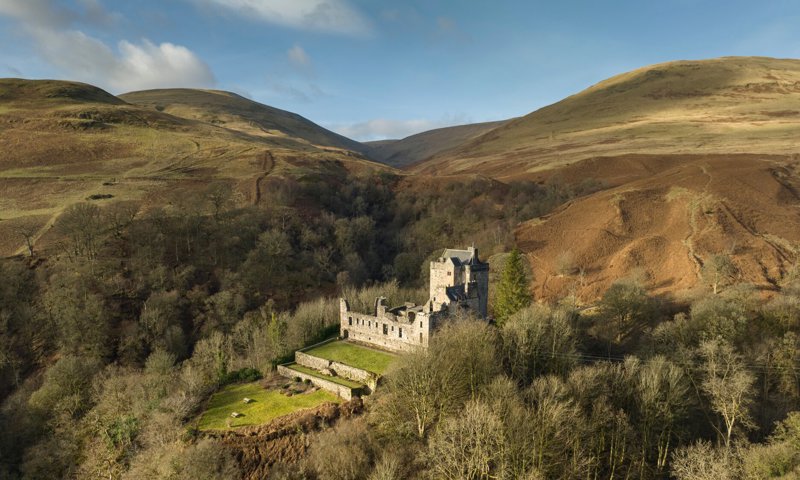
An aerial view of Castle Campbell, Dollar Glen, Clackmannanshire.
Scotland’s Historic Environment Audit (SHEA) provides an analysis of important trends in the historic environment sector, drawing on information from across Scotland supplemented with targeted research to provide evidence on key policy areas.
Since 2007 we have been collecting data on the health of the historic environment and the impact of the resources used to manage and protect it.
Our Past, Our Future: The Strategy for Scotland’s Historic Environment, published in 2023, incorporates SHEA and will develop it to collect and assess more facts and figures to better report and understand Scotland’s historic environment.
SHEA reports help us to demonstrate, through facts and figures, that Scotland’s historic environment is a unique asset that attracts millions of visitors and generates income and jobs across Scotland.
The reports aim to identify issues relevant to the health of the historic environment, and the impact of the resources used to manage and protect it. Data is provided on:
- the number of recorded and protected heritage assets
- the condition of the assets
- funding management and employment relating to the assets
- benefits created by the historic environment
Find out how SHEA reports inform the management of the historic environment.
4 Volunteering and the Historic Environment
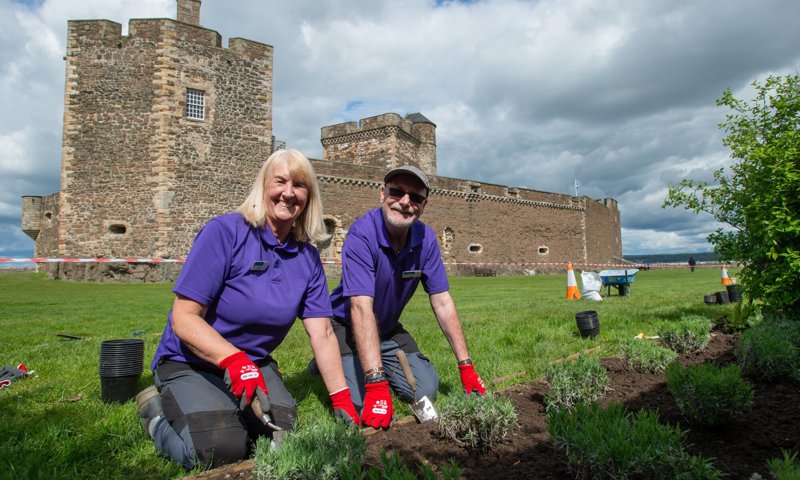
Volunteers gardening at Blackness Castle.
Volunteers are an integral part of heritage; they help to understand and protect buildings and sites and run museums and heritage centres across Scotland.
Our Volunteering and the Historic Environment report was produced in 2016 in collaboration with Volunteer Scotland and the Built Environment Forum Scotland (BEFS).
The project sought to update a 2008 study on volunteering in Scotland’s historic environment, and help us understand the impacts volunteering can have on those involved.
The updated report found that:
- Scotland’s historic environment engaged at least 17,000 volunteers
- the volunteers provided over 121,000 days, an average of 7 days per volunteer
- the economic value of this contribution is £14.7 million
- 40% of organisations surveyed had increased their volunteer numbers in 2015
- 54% wanted to increase their volunteer numbers for 2016
- the ratio of paid staff to volunteers is 1 to 1.6
- 46% of organisations surveyed were run entirely by volunteers
5 The Economic Impact of Heritage Tourism
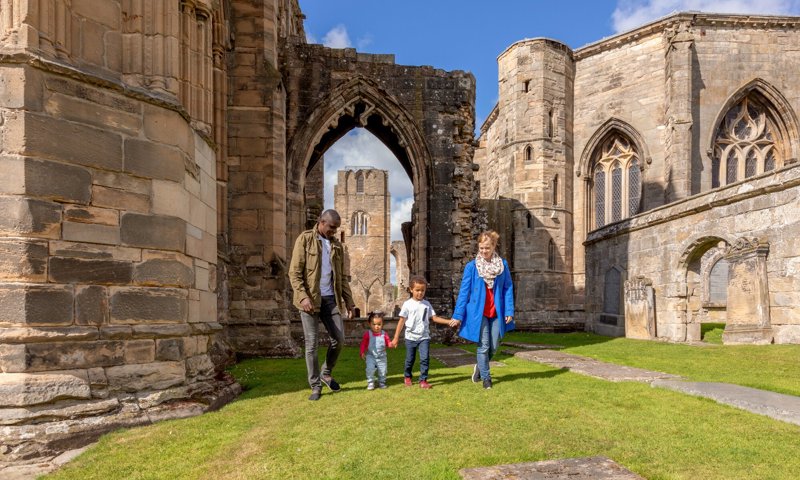
A family of visitors walking away from the West front of Elgin Cathedral.
Historic sites and attractions draw international visitors to Scotland. They also draw Scottish people into other regions for holidays and day trips.
Heritage visitors help to sustain local economies and employment through their on-site spend at the attractions and their off-site spend in local shops, restaurants, hotels and on other services. Much of this economic activity would not have occurred if the heritage attraction had not drawn those people to the area.
Not only do local businesses benefit from such activity, but they in turn support other businesses when they buy from their own suppliers in order to meet the visitors’ demand (this is known as the multiplier effect).
We estimate the total tourism impact generated annually by Scotland’s heritage using data from the three largest national annual surveys:
- the International Passenger Survey
- the Great Britain Tourism Survey
- the Great Britain Day Visitor Survey
Our analysis draws on previous impact research in the sector and is used to track progress against Scotland’s National Tourism Strategy.
Our Heritage Tourism Impact Report [PDF, 142KB] shows the multiple ways in which heritage tourism makes a contribution to Scotland’s economy.
There are a number of different ways to calculate economic impact, and to determine whether visitor spending should be allocated to a sector or not. Our report presents an approach we’ve used to capture the impact of the whole heritage sector, and why we’ve used this approach over other methods.
6 Assessing the public value of heritage sites
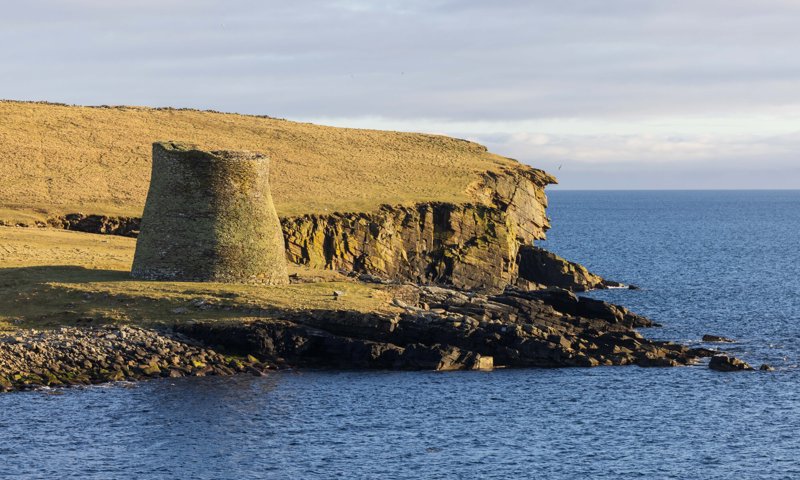
Mousa Broch in Shetland, one of the first six sites tested in 2015. As the tallest surviving Iron Age structure in Britain it has attracted tourists since the early 18th century.
Admission prices and monetary amounts don’t capture the full public value of the properties and collections in our care. Nor does annual footfall capture the intrinsic value that heritage brings to individuals, local communities, or wider society.
Many people who pay to maintain heritage through taxes may not visit the sites at all, but may still feel they derive some benefit from the contributions they make.
We worked with the University of St Andrews to estimate public 'willingness-to-pay' tax (WTP) to maintain the broad benefits of heritage assets, including the:
- aesthetic and symbolic value of the sites
- value of passing on sustainable assets to future generations
Nearly 2,000 Scottish residents were surveyed in two cycles. A pilot set of six sites was tested in 2015, with a further six sites and collections added in 2016.
The assets we tested spanned pre-historic to modern, castles to standing stones, physical heritage to databases of heritage records. For example the initial six sites were:
- Aberlemno Sculptured Stones, Angus
- Calanais Standing Stones, Isle of Lewis
- Kilchurn Castle, Argyll & Bute
- Maclellan’s Castle, Dumfriesshire
- Mousa Broch, Shetland
- St Andrews Cathedral, Fife
The results of the two studies, along with other evidence, are used to support our case to receive public funding, and to inform decisions about priorities for investment within our estate.

